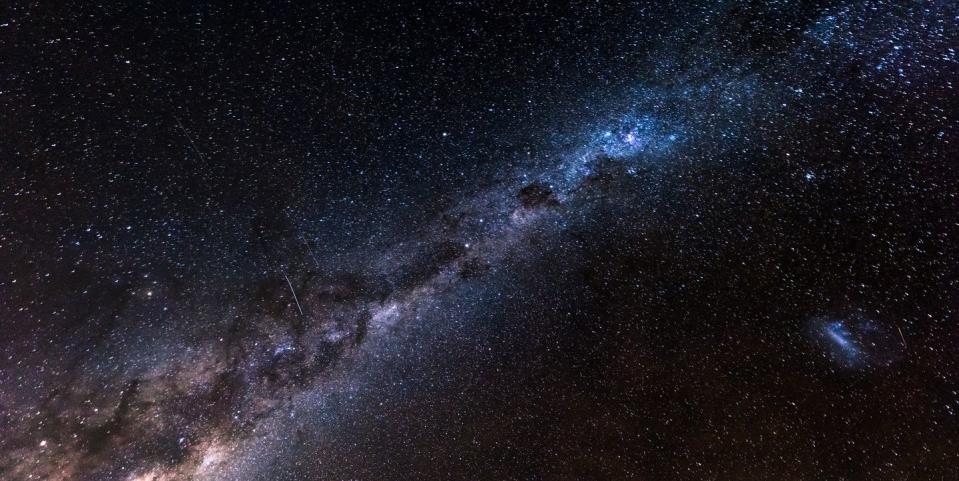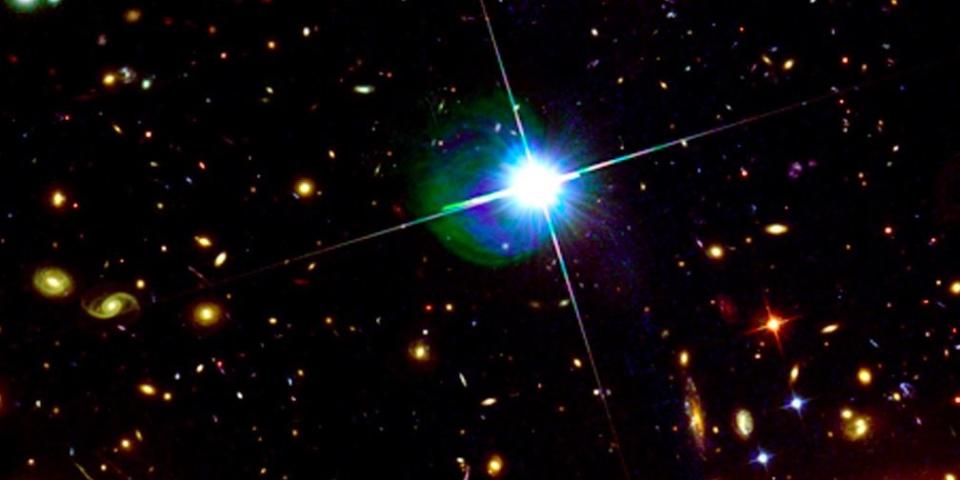A Universe Never Reveals Its True Age, So We Will

Dozens of scientists have worked on new research confirming the age of the universe.
The cosmology community wobbled last year with news of a rogue estimate, but new evidence confirms the previous number.
Researchers used telescope data to corroborate information about cosmic background radiation.
New research confirms the “standard” age of the universe: about 13.8 billion years. Pretty old!
The new revelation follows a 2019 swerve by researchers who insisted the real age is hundreds of millions of years lower. A team of scientists has uploaded a series of papers to arXiv, ahead of any later publication, detailing findings from the Atacama Cosmology Telescope (ACT) in Chile’s Atacama Desert.
“The ACT research team is an international collaboration of scientists from 41 institutions in seven countries,” participating Stony Brook University said in a statement. All of the scientists collaborate in huge groups on papers released using ACT data, including, just this year, a handful of papers ranging from studies of ambient microwaves to high-resolution mapping to measurements of light itself.
In the new paper Stony Brook highlights, led by theoretical cosmologist and physicist Neelima Sehgal, scientists use the light racing across the universe to wind back the clock, tracing the age of the light and backforming an image of the incipient universe. Like approaching absolute zero, scientists chip away at the Big Bang by extremely tiny increments that move closer and closer to their asymptote-like goal.
In this case, using ACT to examine the cosmic microwave background (CMB), an age-old ambient radiation that fills the entire universe, can help scientists fill in that original picture. And in this particular analysis, the scientists used ACT’s powerful observation to screen and assemble a new dataset to study CMB.
To do that, they used complex mathematics to filter out an extraordinary amount of cosmic noise. And all of it was enabled by the sheer power of the ACT in the first place.
Within cosmological research communities, scientists who especially study the CMB have disagreed over what the best metric is to extract CMB data. The researchers explain:
“Here and in A20 we present a significant step toward addressing the tensions with a new precise measurement with much of the weight of the parameter determination coming from the CMB’s polarization and its correlation with temperature as opposed to its temperature anisotropy.”
With a larger and more precise observational tool, they can tune a finer and more precise metric that relies less on anisotropy—the way CMB changes along axes of observation—and more on temperature and polarization.

Polarization, as a studied phenomenon with CMB, dates back to just 2002 and doesn’t replace so much as it supplements the study of anisotropy within the universe. Polarization, scientists believe, is a symptom of the universe inflation that also explains anisotropy.
In that sense, shifting from a model that relies on anisotropy measures to one that also examines polarization means the whole measurement can get closer to the source.
This is a realization of one of ACT’s major goals, in fact. ACT’s position in Chile gives it a clear view of half the sky, and the observatory accumulates data every day. Now, that enormous pool of data can be compared to that of a major CMB-mapping satellite, Planck, launched by the European Space Agency in 2009.
“[ACT’s] primary goal is to make maps of the CMB temperature anisotropy and polarization at angular scales and sensitivities that complement those of the WMAP and Planck satellites,” the researchers explain. And, it turns out, they’re in broad agreement—with a lot more to continue to study.
You Might Also Like

 Yahoo News
Yahoo News 